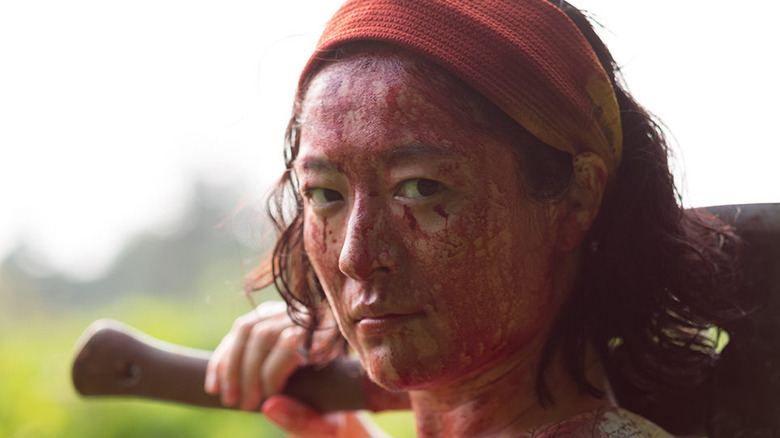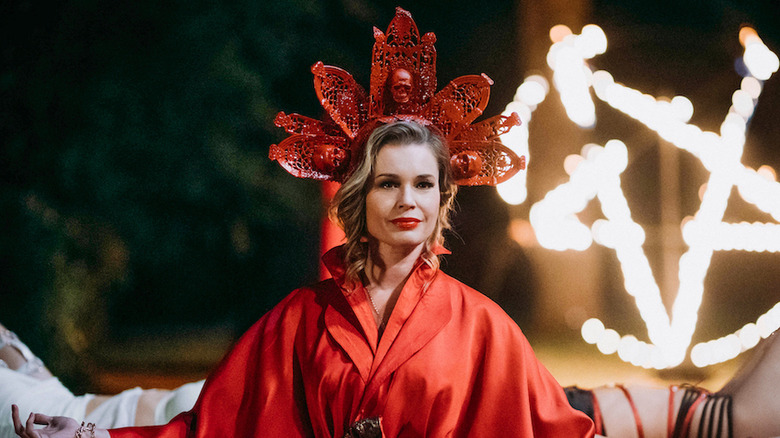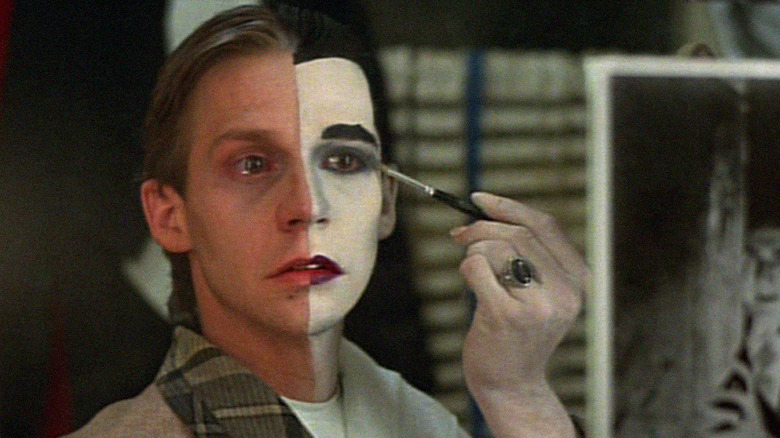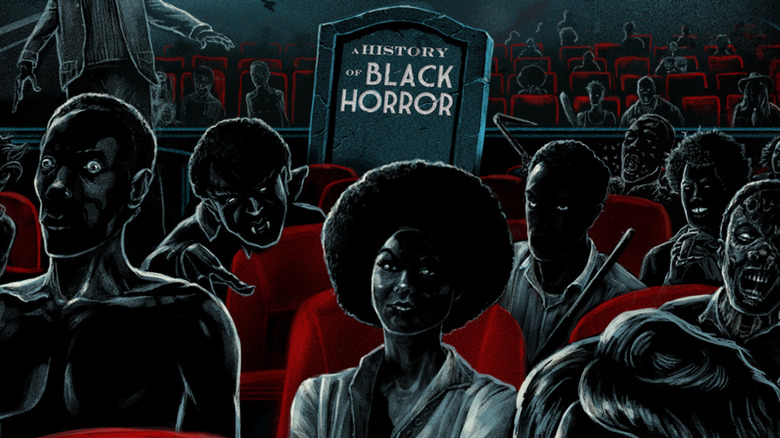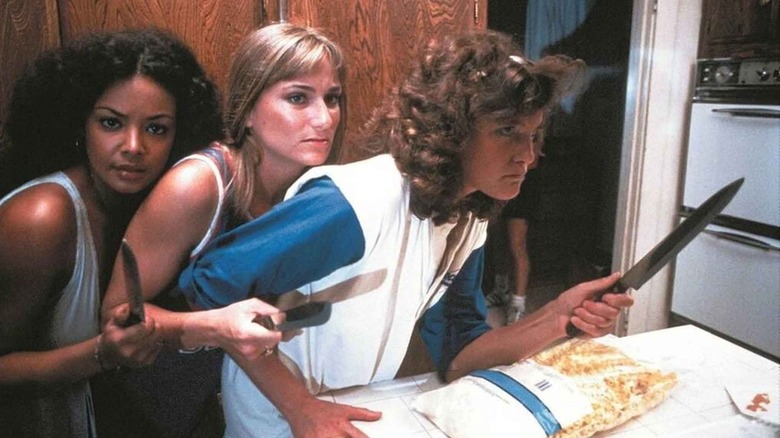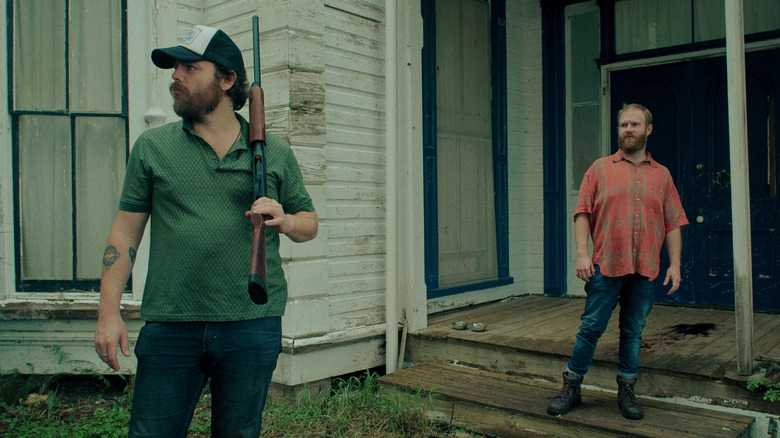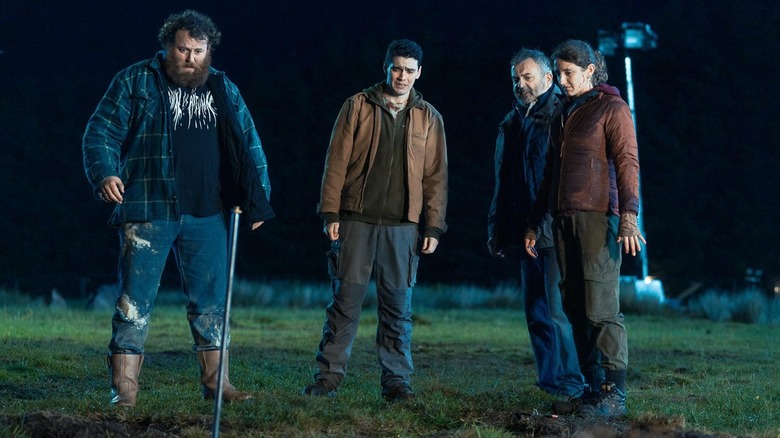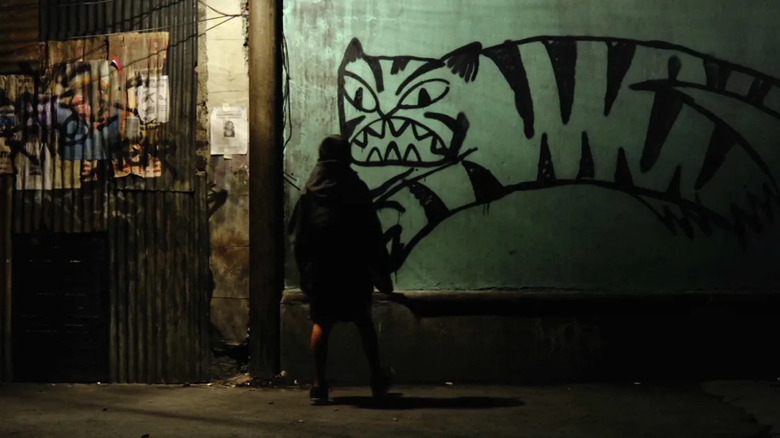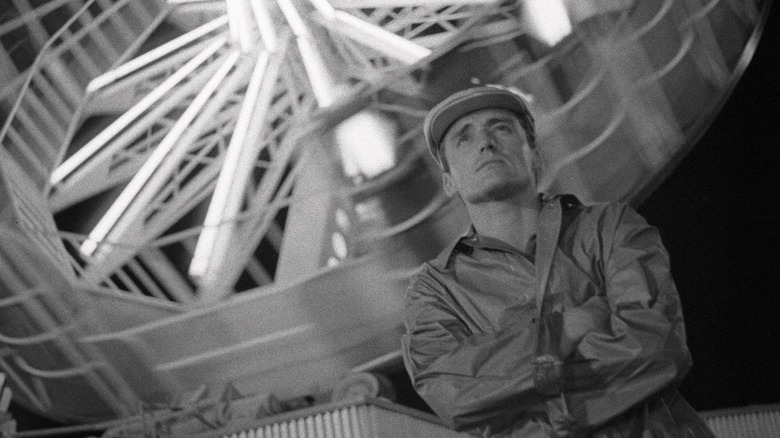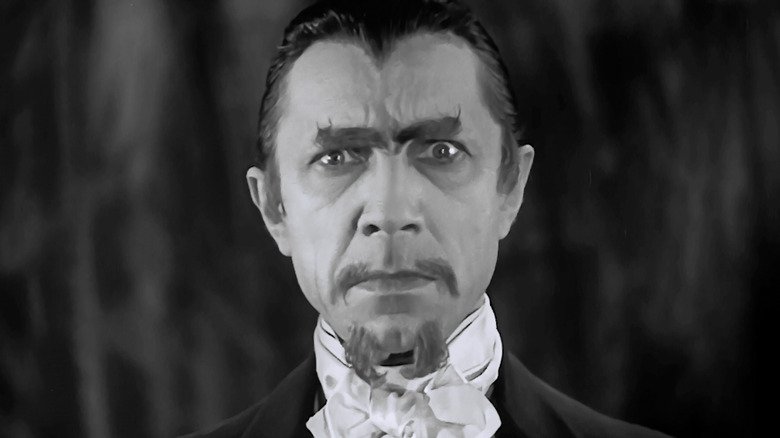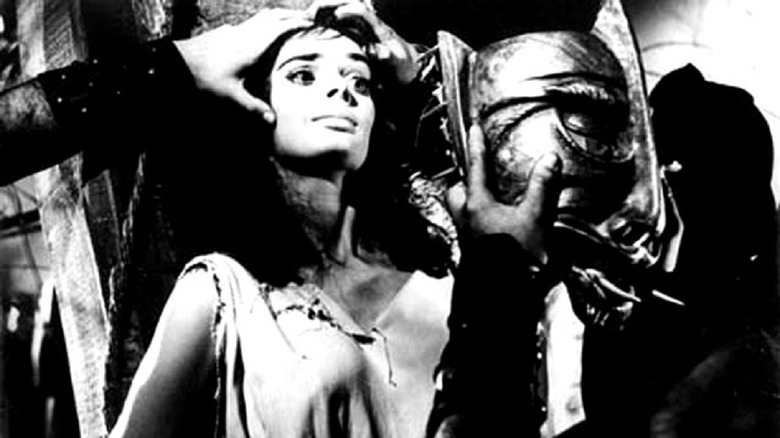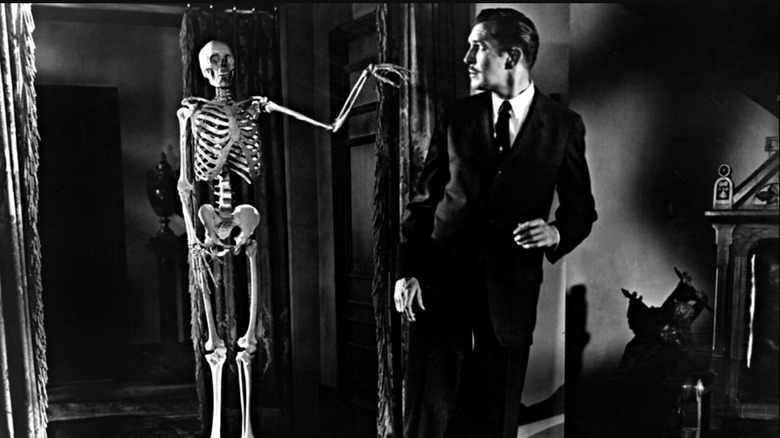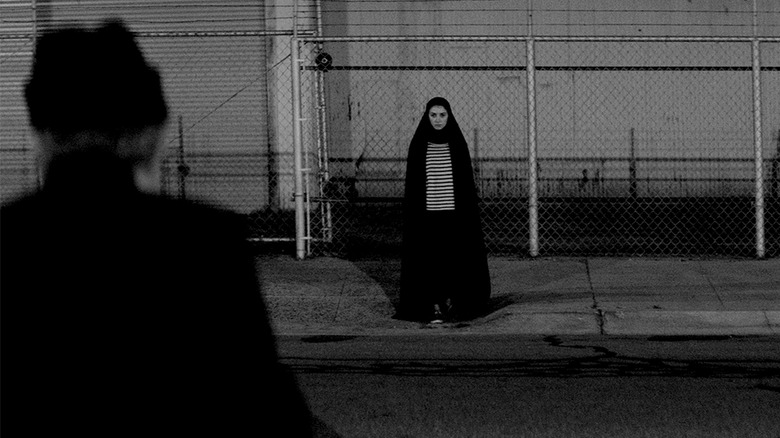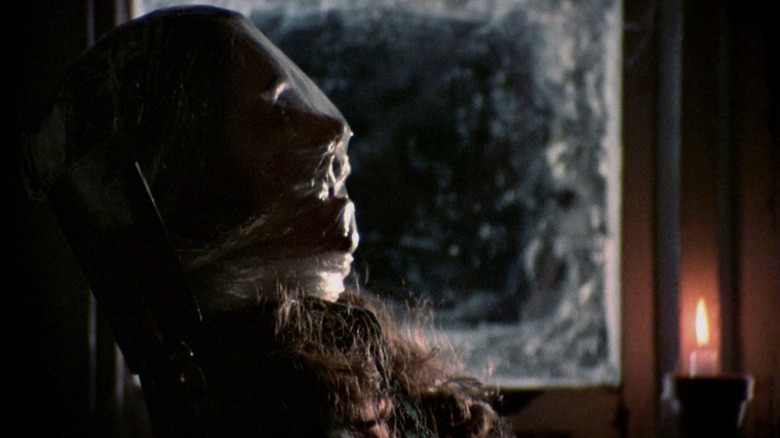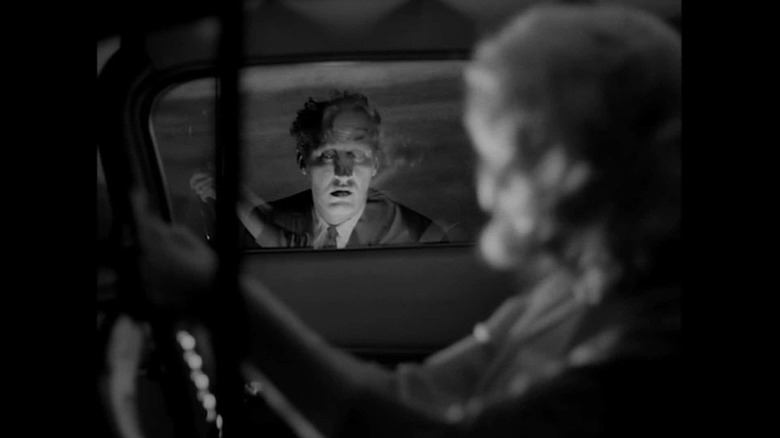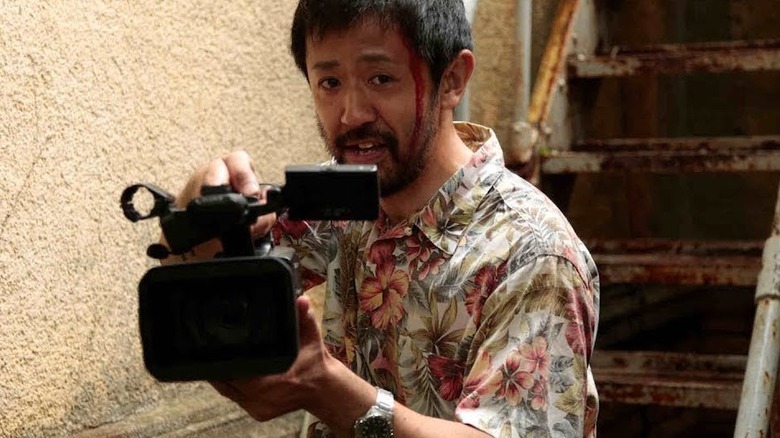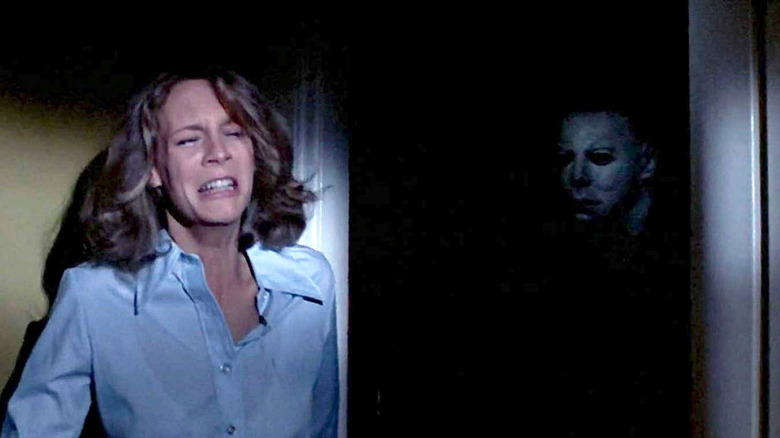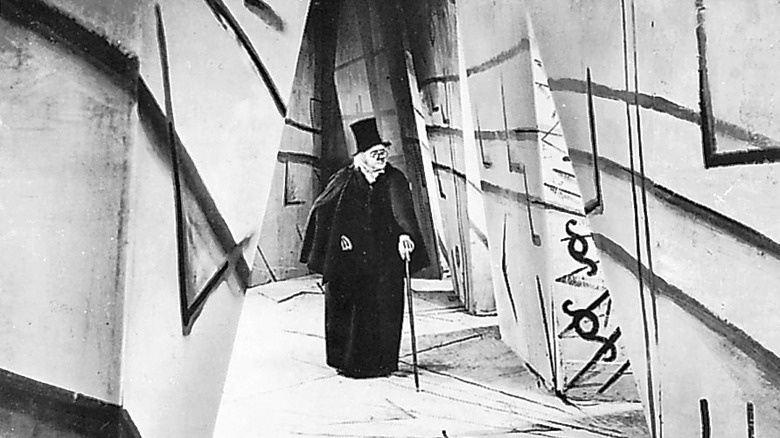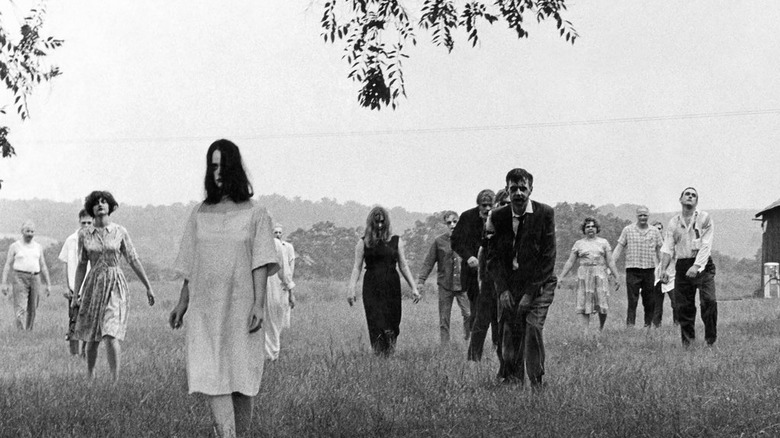The 18 Best Horror Movies On Shudder Right Now
Remember when there were only a handful of streaming services, and subscribing to one or two was a clever way to cut costs instead of paying for cable? We've since been so inundated with different streaming platforms that to subscribe to them all is essentially just giving yourself a curated (but not much cheaper) cable package.
That said, if there are specific things you're interested in, genre-specific streaming services like Shudder can be a great opportunity to make sure you're surrounded by content you already know you like. Shudder has a remarkable catalog of horror films, with an interesting combination of horror from the early days of Hollywood, modern classics, and lesser-known independent productions.
As a genre, horror is where some of the most interesting new filmmaking is taking place; because horror films have a long and storied history of being made on a small budget, the barrier to entry is significantly reduced. As a result, directors are given the opportunity to take chances and be innovative when working in this space, giving us creatively ambitious productions that play with conventions in intriguing ways. Shudder has plenty of movies like that, but it also has some old standbys, too. Here are 20 of the best films on the service.
Satanic Panic
Although the idea that satanic cults corrupt the hearts and minds of the young has gone in and out of vogue over the years, it's such a ridiculous notion that the most reasonable way to make sense of it is a horror comedy that doesn't take itself too seriously. To that end, "Satanic Panic" is the perfect trashy midnight horror flick, one that stands in stark contrast to the current wave of films that feel the need to try to reinvent the genre.
Instead, "Satanic Panic" is perfectly content to follow in the illustrious footsteps of the many cheap but incredibly fun films that came before it. When a pizza delivery girl makes one last journey into an affluent neighborhood before the end of her shift, she crosses paths with a group of wealthy suburbanites who just happen to be part of a satanic cult. "Satanic Panic" satirically exposes the dark underbelly of suburban America, and is far too entertaining to resist.
Fade to Black
Revolving around a cinephile serial killer, "Fade to Black" is an inspired choice for any movie-lover who wants to say, "See? I may be weird and obsessed, but I'm not as bad as that guy!" Dennis Christopher stars as Eric Binford, an awkward loner with an encyclopedic knowledge of old movies who goes completely off the rails when an encounter with a Marilyn Monroe lookalike brings out the sexually deviant and murderous side of his personality. Becoming the physical incarnation of his favorite movie monsters, Eric sets out on a murder spree for the ages.
"Fade to Black" is a bizarre little film, one that perplexed critics at the time. The general consensus seemed to be that its cinematic references were simultaneously too obvious and hokey for movie diehards, while potentially too obscure for casual viewers. Nonetheless, it has developed something of a passionate following over the years.
Horror Noire
"Horror Noire" is the only documentary on this list, but it definitely earns its place. As an exploration of Black identity in the horror genre, it is unmatched. Director Xavier Burgin puts together a primer of Black horror history, highlighting the role monster films played throughout the early half of the 20th century as a means of addressing white fears about the Black community, especially Black men. He then moves onto how modern horror films allow Black filmmakers and actors more agency and a sense of authorship.
"Horror Noire" features fascinating interviews from some of the most knowledgeable Black voices in horror, from film critics and writers to actors and directors. It weaves together a comprehensive overview of Black contributions to a genre that has historically been known for underutilizing the community (and, famously, for establishing the problematic trope in which Black characters are usually killed off first).
The Slumber Party Massacre
"The Slumber Party Massacre" is at once a totally typical teen slasher film, and at the same time a knowing riff on the genre. There's a certain formula to this type of movie: There's always a group of beautiful young women, often high-school or college-aged, who have a gathering that takes an unexpectedly violent turn as they are hunted down one by one by an unknown assailant. At least one of the girls, if not several of them, will end up topless or in underwear for no very particular reason. And in this generation of slashers, sex remains the ultimate indicator of whether someone will live or die — the most promiscuous characters don't tend to last.
"The Slumber Party Massacre" manages to simultaneously subvert these tropes and embrace them wholeheartedly (allegedly, it was written as a parody, even though the final film plays everything fairly straight). This is a film that knows exactly what it's about, and relishes every minute of it. And with not one but two female filmmakers behind the camera, it has a refreshingly non-exploitative presence.
After Midnight
Every night, Hank stands guard over the entrance to his sad, empty house, protecting it from the malevolent force he believes is stalking him. No one else can see this alleged monster; they think that Hank is manifesting it out of a sense of despair that Abby, the love of his life, has vanished, leaving only a vague note for him to obsess over. In many ways, Hank is protecting a broken home, and his fixation on the monster serves as a distraction: Every minute he spends focused on it is time he doesn't have to spend examining his failed relationship.
But is the monster real, or has Hank invented it out of grief and loneliness? "After Midnight" is a quiet, folksy horror film, melancholic as much as it is scary. But it also has an irreverent sense of humor, especially as we learn more about the monster in question, that comes as a charming surprise.
Boys from County Hell
The rare Irish vampire film, "Boys from County Hell" moves away from the immortal figures of the 19th and 20th centuries and taps into something far more ancient and elemental. When a group of modern-day construction workers in a small Irish town demolish a centuries-old cairn, they accidentally unleash a force of evil (the legend of which was the inspiration for Dracula, since Bram Stoker grew up in the area) that had been trapped beneath the rock since time immemorial. If they want to survive the night, they'll have to figure out a way to get the blood-sucking nuisance back underground.
But although this is obviously life-or-death stuff going on here, "Boys from County Hell" has a playful tone, more inspired by Simon Pegg and Nick Frost's brand of horror comedy than by "Interview with a Vampire," or, heaven forfend, "Twilight."
Tigers Are Not Afraid
Directed by Issa Lopez, "Tigers Are Not Afraid" made a huge splash in the horror community for its inventive use of a monkey's paw scenario and how well it blends the realism of the Mexican drug war with more fantastic elements. After a shooting outside Estrella's (Paola Lara) school interrupts her education, she is given three pieces of chalk that her teacher tells her will grant three wishes. Estrella's life is full of tragedy that gives her a maturity beyond her years, but these wishes allow her to navigate the harsh reality of the local criminal underground with a childlike innocence.
A remarkable entry from a burgeoning talent in Mexican cinema, "Tigers Are Not Afraid" was met with an overwhelmingly positive response from audiences and critics alike, the success of which Issa Lopez has since been able to parlay into development deals with horror stalwarts Guillermo del Toro and Jason Blum.
Night Tide
At first glance, "Night Tide" seems like an odd choice for Shudder. It's not really a horror film. It's much more of an understated dark fantasy, albeit one with the occasional murder.
"Night Tide" stars an impossibly young Dennis Hopper as a sailor who falls in love with a strange woman who performs as a mermaid in a sideshow attraction. The twist? She believes that she actually is a mermaid, one who is fated to murder men by the light of the full moon. It's an unsettling, melancholy romance, one that's doomed from the very beginning.
The production of "Night Tide" has a dreamy quality to it, almost as though the audience is viewing the entire strange business through a mist — or, if you like, from underwater. Despite the fact that it isn't particularly scary, it is nonetheless an intriguing addition to the service, and an entirely unique take on mermaid mythology.
White Zombie
When most people think of zombies, a certain image comes to mind. Yes, we can quibble over fast-moving or slow-moving zombies, but they're generally pale and undead and have a hankering for human flesh.
That's only part of the picture, though. Before "Night of the Living Dead," zombies in film were totally different creatures. A traditional zombie was still alive, technically, but brainwashed into doing the bidding of its master.
And that's what we see in "White Zombie." When Beamont (Robert Frazer) is rejected by a beautiful young woman, he conspires with the zombie master of Haiti (fittingly played by Bela Lugosi) so that she is compelled to stay with him forever. It's a quietly unsettling film, and while it has few major scares, the haunting image of the woman walking around in an unseeing, unfeeling trance is a defining moment for the genre.
Black Sunday
"Black Sunday" is an icon of Italian Gothic style, a treasured movement in horror cinema. Like many other films of its ilk, "Black Sunday" incorporates elements of traditional folklore into its story, juxtaposing the beautiful and the profane in its tale of a witch from centuries past who returns to seek revenge. The images it contains are as striking as they are horrifying: actress Barbara Steele's luminescent face held in close-up, only to be gruesomely marred by deep cuts from the mask that was hammered onto her face by superstitious villagers who think she's a witch.
Director Mario Babva's work here was incredibly influential on many films that would come later, both in Italy and further afield. Although "Black Sunday" was not particularly well-received in Italy upon its initial release, it would grow to typify Italian horror of the '60s, and its visual motifs stretched beyond the limits of the genre, impacting both spaghetti westerns and giallo thrillers.
House on Haunted Hill
As far as horror movies on Shudder go, "House on Haunted Hill" is probably among the tamest. There's no gore, and not even much tension. But if there's one thing "House of Haunted Hill" has, it's a sense of atmosphere. If a horror film from the '50s isn't going to feel dated, that makes all the difference.
When Frederick Loren, played by a delightfully malevolent Vincent Price, brings a group of strangers together and offers them $10,000 if they can survive the night in a haunted house, it almost seems too good to be true. After all, it's just one night. You can put up with almost anything for a night if there's a huge amount of money on the line, right? But things quickly grow much more ominous than the visitors had anticipated, and the question soon becomes not whether they'll manage to stay until dawn, but whether they'll survive at all.
A Girl Walks Home Alone at Night
"A Girl Walks Home Alone at Night" stands out as an entirely unique take on the vampire film. Directed by Iranian-American filmmaker Ana Lily Amirpour, it stars Sheila Vand as a veiled antihero who roams the streets at night, punishing the evil men she meets along the way.
"A Girl Walks Home Alone at Night" depicts vampirism as a foil for the dangers women face in an oppressive patriarchal society. Vand wanders aimlessly in the dark, an action that women have been warned against since time immemorial, but she is in no peril. In fact, she is the predator in this scenario, a twist that is incredibly empowering from a feminist perspective: the woman avenging the sordid crimes of man. The very name of the film is a provocation, one that turns the tables on our expectations, and Amirpour's capable hands build a cityscape that is eerily unpopulated, the perfect playground in which the Girl can hunt.
Black Christmas
"Black Christmas" is a nightmare scenario for any group of women who live alone. Our heroines, a bunch of college students in off-campus housing, keep getting unnerving phone calls from a man. They're a little freaked out, but mostly just annoyed — that is, until they start getting murdered, one by one.
You're supposed to be able to feel secure in your home, and the scariest part of "Black Christmas" is how thoroughly the murderer violates that safe space. The idea that your would-be attacker could be hiding where you live without you knowing it is genuinely chilling. In similar movies, creepy phone calls can come off as a little camp, but here they are genuinely disturbing. It's not much what the man says (because really, he doesn't say very much at all) but his tone and the guttural, feral, spine-tingling noises that come through the phone. "Black Christmas" sounds like it's another cheesy holiday slasher, but it has some deeply upsetting moments that really linger.
Carnival of Souls
M. Night Shyamalan's "The Sixth Sense," along with many other modern horror films, owes a not-insignificant debt to the simple, low-budget "Carnival of Souls," which asks an endlessly unsettling question: What if you died and didn't even realize it?
After Mary is in a car accident that leaves every other passenger dead, she emerges from a river, apparently unharmed. But as Mary continues on her journey, she begins to feel peculiar. Everyone she meets treats her strangely, and she is plagued by the vision of a pale, dead-eyed man who appears when she least expects it.
What follows is a quietly eerie slow burn, a staggeringly effective example of what can be accomplished in horror without a massive budget. And the scene in which Mary finally arrives at the titular carnival is a piece of classic horror magic, one that stands up favorably against anything that you might see in a more modern ghost story.
One Cut of the Dead
A recent zombie export out of Japan, "One Cut of the Dead" is one of the most surprisingly fun horror films in ages. Making a movie on a low budget can be really stressful, so it's understandable that the director in "One Cut of the Dead" resorts to the black arts in order to keep costs down. Rather than hire a crew of extras to perform in his zombie movie, Director Higurashi summons real zombies to his set, and uses them instead. This works exactly as well you'd expect. And that's just the beginning of the surprises.
The exhausting real-life "One Cut of the Dead" shoot lasted for eight days, and its tiny budget was largely crowdfunded (amounting to around $25,000). The crew's commitment was richly rewarded, however: "One Cut of the Dead" broke box office records in Japan, was given a celebratory international release, and made back its budget one thousand times over.
Halloween
Let's be honest, recommending "Halloween" isn't exactly a bold, out-of-left-field choice. It is, after all, one of the most famous horror films in history, one that launched the career of a young Jamie Lee Curtis and made the eerie Michael Myers a household name.
But how could we even consider leaving it off a "best of" list? In "Halloween," Curtis cements her reputation as a bona fide scream queen as Laurie, a teenage babysitter whose kid-watching gig is interrupted by the homicidal machinations of Michael Myers, recently escaped from a psychiatric institution 15 years after murdering his older sister. Director John Carpenter makes a meal out of the slow build-up, as Myers stalks his prey and everyone tries to convince Laurie that she's imagining the creepy man following her around. A classic of the genre, "Halloween" is a must-watch for anyone who considers themselves a horror fan.
The Cabinet of Dr. Caligari
Shudder has more than a few examples of early horror in its catalog, but perhaps none are more well-known than the German expressionist film "The Cabinet of Dr. Caligari."
When Francis and Alan encounter Dr. Caligari and the sleepwalker that he controls (played by a young Conrad Veidt), Alan ominously learns that he will die before morning. When this comes to pass, Francis and his fiancée are led through an unsettling hall of mirrors that brings them to the brink of insanity itself.
All exaggerated, grotesquely contorted angles, "The Cabinet of Dr. Caligari" reflects the distorted sense of reality brought forth by profound disillusionment in the wake of World War I. Within its fractured narrative lies a surprisingly sophisticated framing story and one of cinema's first twist endings, all in service of an effort to make viewers question not just existing power structures and traditional figures of authority, but their own perceptions of reality.
Night of the Living Dead
One does not simply make a list of the best films on Shudder and leave off "Night of the Living Dead," one of the most iconic horror movies of all time. With it, George A. Romero singlehandedly redefined the cinematic zombie.
"Night of the Living Dead" begins inauspiciously, with a brother and sister laying a wreath for their long-dead father, when they are slowly approached by a man who doesn't look quite right. The notion of one lone zombie seems quaint, but in no time at all our heroes are beset by hordes of slow-moving but maddeningly persistent flesh-eaters. Taking refuge in an old, abandoned farmhouse, a group of strangers (led by, surprisingly for the late '60s, a Black man played by Duane Jones) will fight to survive the night.
The fact that "Night of the Living Dead" was reportedly produced for just over $100,000 works to its advantage: Its practical effects ground the film in a grim sort of reality that make it all the more unnerving, and highlight the film's political commentary, which still feels relevant today.
